Power Commander vs. Bazzaz vs. ECU Flash vs. aRacer Race ECU
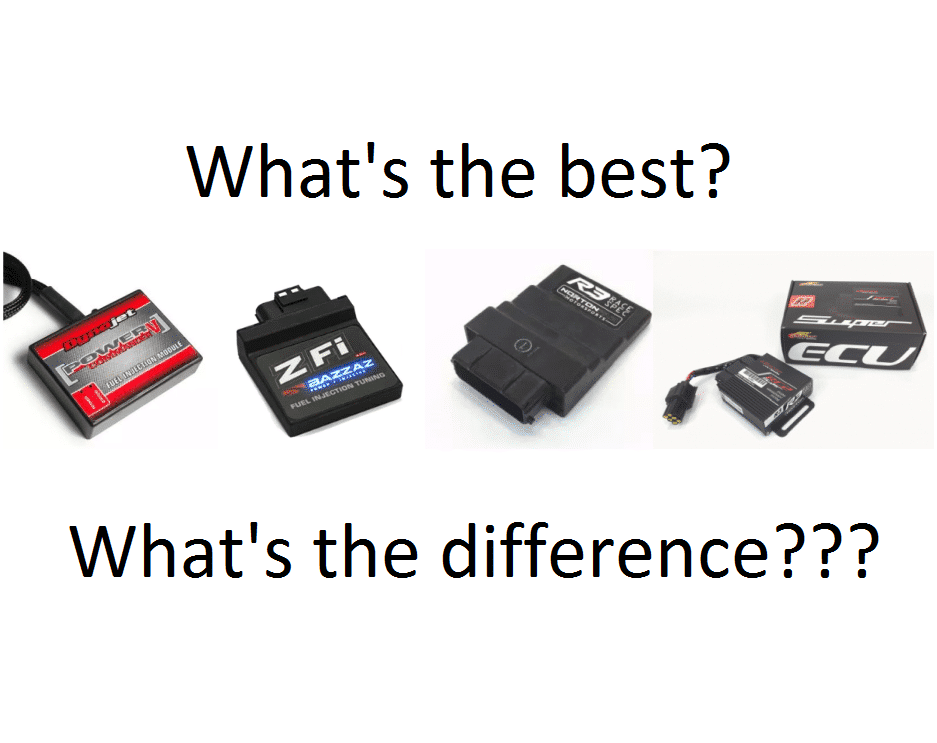
What’s the best?

What’s the difference???
This article used to be combined with some dyno and exhaust stuff for the Yamaha R3, but with all the different engine tuning options on the market today, I felt it necessary to discuss it a little more and create a separate article. There are three main categories of tuning systems: Piggy-back fuel controllers, ECU flashing, and race ECUs. One nice advantage to ECU flashing and race ECUs that’s worth mentioning is that there is almost no wiring to install, since these systems just plug into the OEM ECU connector.
Piggy-back Fuel Controllers
Power Commander PCV, Bazzaz Z-Fi, and other systems like Rapidbike are all called piggy-back style systems because they connect to the bike’s fuel and ignition system after the ECU and make fuel and timing adjustments on top of the ECU’s base signals. The OEM ECU is still doing most of the work. These systems give you a chart of adjustment cells for fuel ranging from 0% throttle to 100% throttle and 500 RPM to past the rev limiter and you make adjustments in a plus or minus percentage points. For example, entering -2 in a cell means 2% less fuel than the ECU’s map at that point, entering +10 in a cell means 10% more fuel than the ECU’s map. However, just a side note, the percentages don’t quite match up between units so be careful if you are trying to convert a map from a PCV to a Bazzaz or visa versa. The big downside to these piggy-back systems is that you don’t have control of what the ECU is doing, and what most people don’t realize is that the OEM ECU is constantly changing these base signals based on a host of parameters and signals from various sensors on the bike. So your expensive “custom tune” is constantly changing, even if you don’t want it to, and often times if you take a custom tuned bike back to the same dyno the next day, you’ll get different readinds. There are also tons of tuning parameters in the OEM ECU that you just don’t have any control of with a piggy-back system.
The Bazzaz Z-Fi is available as a base unit with fuel control only, or as the Z-Fi TC, with quickshifter and traction control built in. The traction control is measured by how quickly the RPM is changing, not by wheel speed sensors, but still works pretty well. The Power Commander V is slightly more expensive as a base unit, however the PCV for the Yamaha R3 offers control of the fuel mapping as well as ignition timing. There is an optional add-on quickshifter available, but there is no traction control available for the PCV. Similarly, Rapidbike also allows changing of fueling and ignition timing, and costs a bit more.
The Power Commander has some advanced features that the Bazzaz lacks, such as the ability to create a separate fuel map for each individual cylinder and each individual gear, while the Bazzaz controls all cylinders together, but offers global adjustments to the map for each cylinder and each gear. The Bazzaz has two features that are important to me that the PCV does not. First is the ability to highlight multiple cells, or the entire map, and easily make global changes up or down. This is extremely helpful and time saving when adjusting areas of a map or an entire map up or down for the current air and fuel conditions to keep the map in the ideal AFR range or test engine performance during tuning. Bazzaz maps are also color coded, which makes them much easier to look at to get the curves you want. Both systems have an auto tuning module that is available at an additional cost. Both auto tuning systems plug into the main unit and connect to an 18mm wide band O2 sensor that is installed in the exhaust midpipe. You open a separate chart of cells in the software and enter a target AFR value that you want the bike to run at for each RPM and throttle position, and tell the unit to start tuning. As you ride, both system will take readings from the exhaust of the actual AFR value. After that, the systems differ slightly. The Bazzaz Z-AFM will display the average AFR it recorded for each RPM and throttle position in one table, and the changes it recommends for your fuel map to reach your target AFR values in a second table. Both tables are also color coded which makes them very easy to read, and no changes are made until you make them yourself, so you have the chance to review and smooth the data before applying it. The Power Commander Autotuner constantly makes changes to try to reach your target AFR values, but it makes the changes in a separate table, so you can still view the changes and discard them afterwards if you want. It doesn’t change your base map unless you decide to change it, but it does effectively change your map as you are riding using a separate table. The Power Commander Autotune doesn’t display the recorded AFR values for each cell, which is a bummer, but it will show you live what the current AFR value is if you have it connected and turned on with the bike running. This is a nice feature for using the system when you are on a dyno, and makes it a little easier to compare the sensor readings to the sensor readings on a dyno. The Bazzaz software allows you to easily highlight a certain section of cells and only make those changes, something that is very helpful. If you want to only apply certain changes with the Power Commander software, you have to delete the values that you don’t want, then apply all of the changes, which is a little more work.
Here’s a screenshot from the software of both units. The Bazzaz runs the RPMs left to right, which I prefer since dyno charts always run with the RPMs left to right, so it’s easy to match up readings from a dyno to changes in the fuel map. The PCV runs the RPMs top to bottom and the throttle position left to right. The Bazzaz also color codes the fuel map changes, which makes it much easier to look at, and easy to see abrupt changes or spots that might be mistakes. This is especially helpful when using the Z-AFM, as you can easily see where it wants to make bigger or sudden changes, and you can easily see whether the whole map or certain areas are running lean or rich.
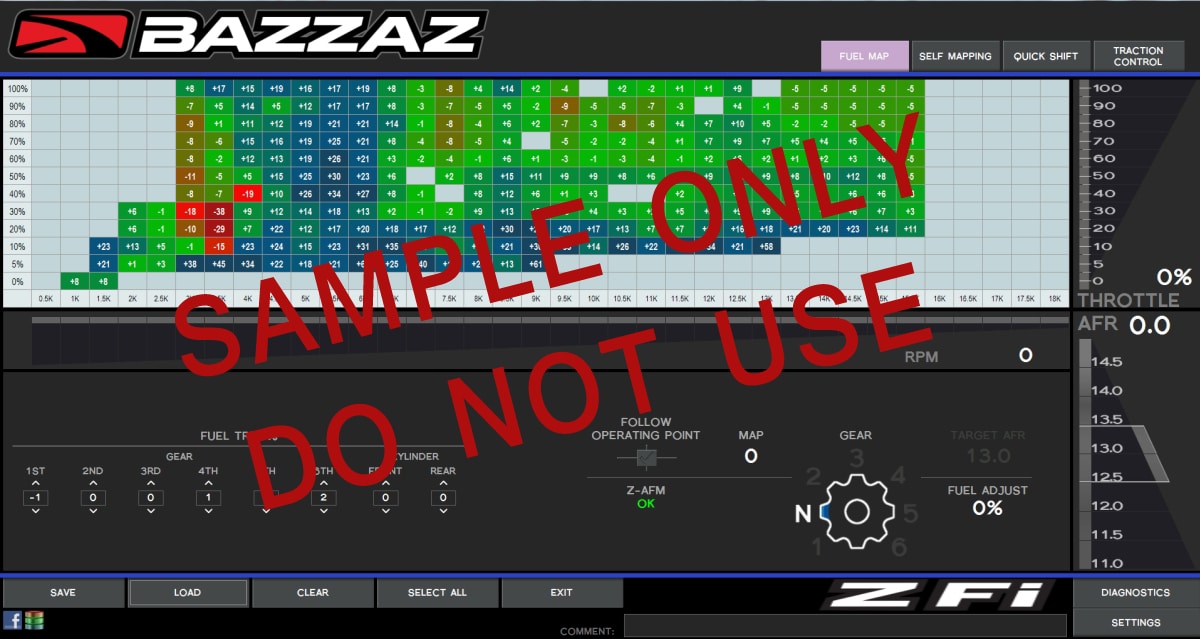
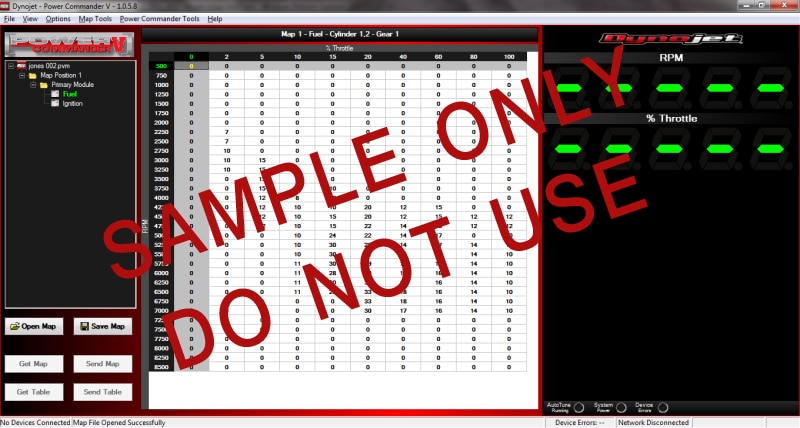
Here’s a screenshot of the Bazzaz Z-AFM self mapping page showing the recorded average AFR values for each cell. If you never rode at a particular RPM and throttle position, the cell is blank. These readings alone can be extremely useful for tuning trackside and looking for trouble spots based on how the bike feels or just the air and fuel conditions for the day.
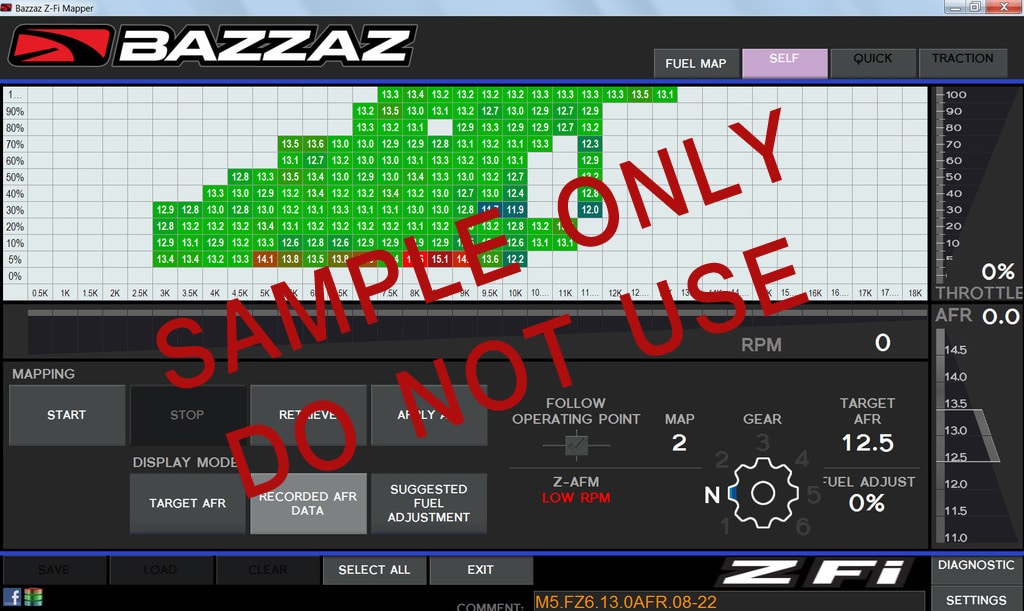
Here’s a shot of the Bazzaz Z-AFM self mapping page showing recommended changes. From here, you can apply all or edit various sections, or just use the data as information and leave your original fuel map unchanged.
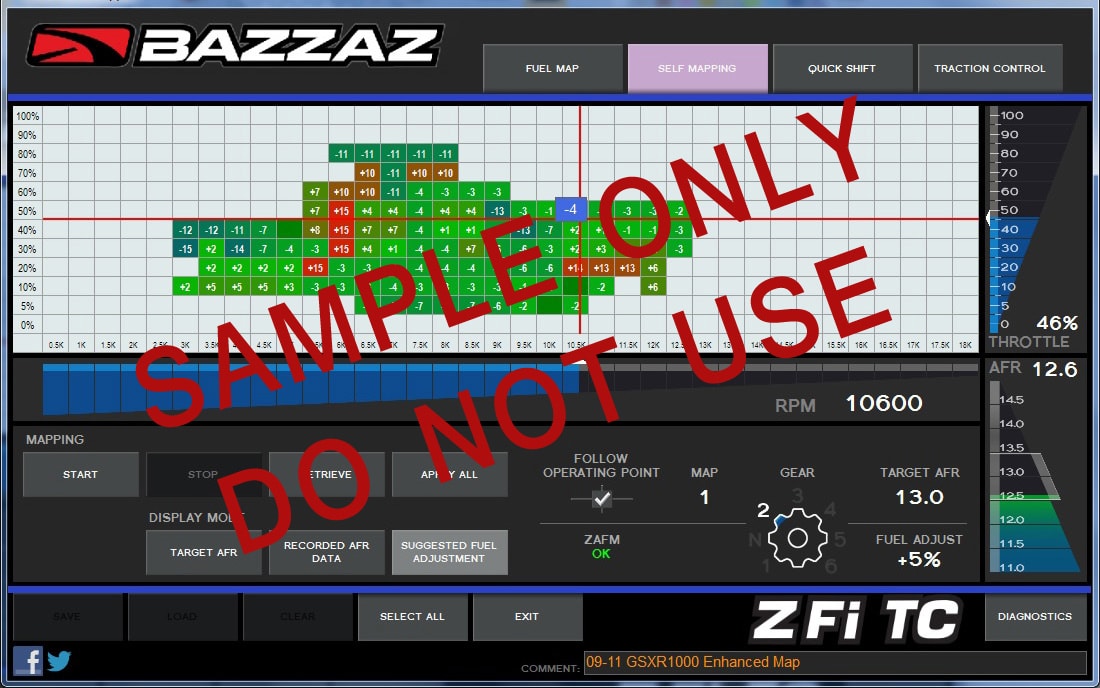
Here’s a shot of the Power Commander Autotune showing the Trim Table that is added on top of your current base map. This is where the live changes are made while tuning.
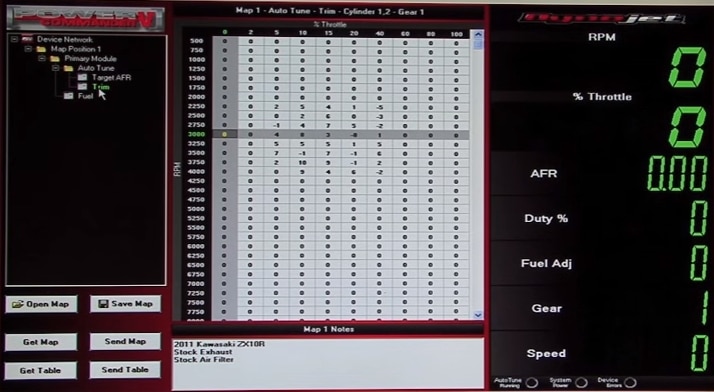
ECU Flashing
ECU Flashing has become pretty popular and is often replacing or being paired with piggy-back style systems. The term ECU Flashing refers to using the OEM ECU, but connecting to it with aftermarket hardware and rewriting some of that data in it using aftermarket software. Flashing the OEM ECU is a bit different than using a piggy-back style system because instead of making changes to the fuel and ignition signals after they leave the ECU, you are able to reprogram the ECU to change the signals from the beginning. ECU flashing is typically far more powerful than using a piggy-back fuel controller because you not only have access to a lot more fuel and ignition timing data with a lot more cells to fine tune with, but you can also change or remove restrictions in the ECU, adjust fuel injector timing, and adjust additional things like fuel and timing as they relate to manifold absolute pressure (MAP), coolant temperature, gear position, cylinder, etc., and with bikes that use ride-by-wire electronic throttle bodies, you can even change the throttle mapping. Some bikes also have additional things that can be changed like upper and lower fuel injectors, selectable performance fuel maps, quickshifters, and more. Different bikes have different options, but they are far more adjustable in the ECU than with a piggy-back fuel controller. There are two main companies offering hardware/software systems for “flashing” or modifying the OEM ECU’s software, these are Flashtune (FTECU) and Woolich Racing. When these companies crack the code for a particular ECU, they release a standard base setup for that particular bike. Flashtune calls this the Unrestricted map, and this map is available to all Flashtune dealers and is typically what you will get if you have your ECU flashed by most shops. So be advised, not all ECU flashes are created equal.
With more adjustability, comes more responsibility, and more knowledge and time is required to maximize performance. Some shops that specialize in certain bikes (like us for example) will invest the time to build their own optimized flash for a particular bike, and this usually costs a little more because of the hours invested, but is typically better performing, especially if paired with the same components used to design the tune. Some ECU’s have the ability to connect wide band O2 sensors to replace the OEM narrow band sensors and assist with tuning, and some (like the R3) cannot and must be tuned manually or with maps converted from piggy-back controllers. For example, most tuners can do a pretty decent job tuning a bike with a Power Commander and autotuner in less than a day, but optimizing an ECU flash for a particular year, make, and model bike can easily take over 100 hours on the dyno and racetrack to really fine tune all the available options, especially if you start changing a lot of the OEM hardware like exhaust, camshafts, and velocity stacks.
Here’s a screenshot of one cylinder’s fuel map in the Flashtune software. Flashtune also color codes the cells to make it easier to look at. You can see that there’s 3-4 times as many cells as Bazzaz or Power Commander and data in each cell can be entered with 2 decimal places so the fueling is more accurate and can be fine tuned much more.
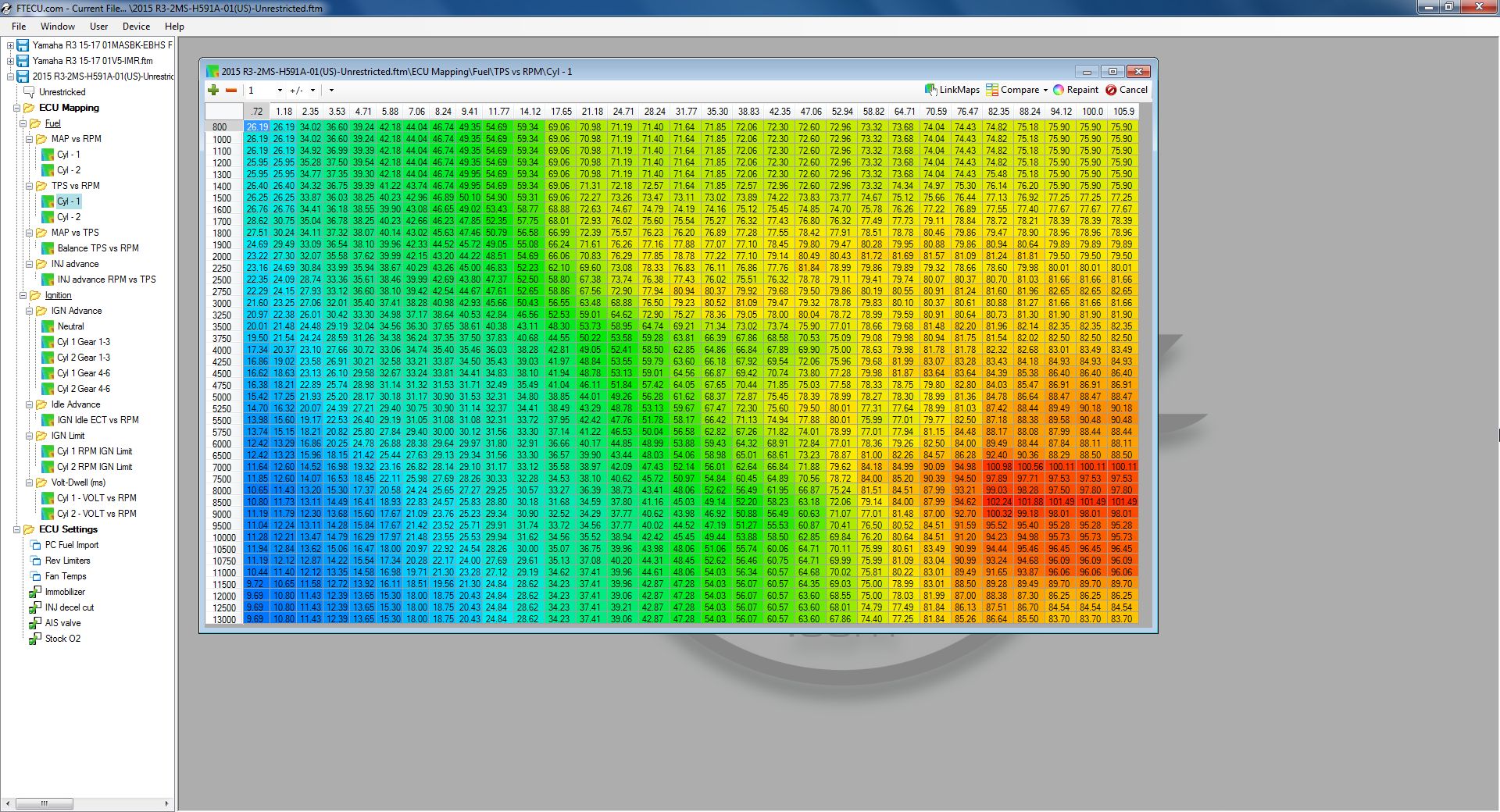
aRacer Programmable Race ECUs
However, even with all of the additional options available to be customized by flashing the OEM ECU’s software, there is still more data in a stock ECU that cannot always be changed, and as I mentioned, additional add-on type options are still very limited. This is where aftermarket race ECUs come into play like the aRacer Mini5 and aRacer Super RC2. Not only can you adjust all of the things listed above, including fuel, ignition and injectors, with aftermarket ECUs you don’t have any crazy programming left over from emissions regulations and you have the freedom to add quickshifters, autotuners, and other modules. The aRacer Super RC2 is a fully programmable race ECU that gives you full control of the motorcycle’s engine. Little things in the ECU can make a dramatic difference in performance, like knowing when the bike is accelerating and decelerating and changing the fueling response and delivery accordingly. For example, with the stock ECU, the Yamaha R3 suffers from a very delicate fueling balance. This is because it’s low power often leads to very rapid roll-ons of the throttle, but when you open the throttle quickly, the OEM ECU dumps fuel way too fast, and can cause the bike to bog and hesitate, even if the fuel mapping is very lean. If you roll the throttle on slowly on the same bike, the same thing doesn’t happen, and if your tuning is too lean, it can lead to hesitations as well as the engine starves for fuel. This sort of thing can be changed in the aRacer ECUs and we don’t suffer from the same delicate tuning balance and it’s easier to get smooth acceleration with a variety of exhausts and engine setups. The Super RC2 is aRacer’s top of the line fully programmable race ECU and the Mini5 is a powerful race ecu that offers a simplified user interface and a little less adjustability for about half the price of the Super RC2, but in most cases, very similar performance. An autotune module can be added directly to either aRacer ECU to speed up setup and tuning, and is also far more accurate than piggy back autotuners because the aRacer’s autotuner is connected directly to the ECU so it can be used more effectively to adapt fueling to different elevations or fuel. It reads AFR from the exhaust with a wideband O2 sensor, but it also can read signals from the throttle body’s MAP sensor, engine temperature, and other sensors. The aRacer add-on quickshifter is the smoothest quickshifter I’ve ever used, again, because it connects directly to the ECU and subtle differences in programming allow for smoother shifts than any piggy-back or stand-alone quickshifter.
Here’s a screenshot of the aRacer Super RC2 tuning software. The tuning is done by manifold absolute pressure, rather than TPS, which is a bit of a different language to learn, but is more accurate than TPS alone. RPM cells are spaced 400 RPM apart at lower RPMs, and only 200 apart above 9600 for better control in the power band. you can also see the dozens of options and tables on the left, giving us full control of the engine.

This is all fun and good, and gives the expensive aRacer Super a slight performance and tuning advantage compared to other systems, but this is really just the tip of the iceberg when it comes to the available power packed into the aRacer Super ECU. The real value comes when you dig a little deeper and realize that there is a built in data collection system that can monitor, recall and graph input from every single sensor on the bike, giving you MogoGP style data logging of more information than most people will know what to do with. I didn’t count all the inputs that come with the Yamaha R3, but it’s more than 50, and more can be added. By connecting additional modules like the aRacer Race Tools Package with GPS tracking and Gyro sensor, or additional sensors like brake pressure, suspension travel, wheel tone rings for traction control, you get even more useful data that is all synced by time and GPS. You can view data overlays of things like engine temperature, air/fuel ratio, throttle position, or fuel injector duty cycle, and match these signals to a GPS tracking of the race track and lean angle data from the gyro. Then you can compare, lap by lap, how you are opening the throttle, what happens to your AFR as you accelerate, what the engine temperature is, how much your rear tire is spinning compared to your front, your trap speed compared to your lap time, when you are applying the brakes and with how much pressure, and even fine tune traction control based on lean angle data and wheel speed differentials from front and rear wheel speed sensors. You can even hone in on a specific moment in the data if you see something you want to analyze, and look at your fueling tables connected to that moment to see what the MAP pressure was and what your fueling and ignition programming was at that moment. Amazing. Try doing that with a Bazzaz or Power Commander.


So what system is the best? Well, this depends on what you are trying to do with it and what your budget is. The most powerful system I have any experience with is certainly the aRacer Super RC2, but it’s also pretty expensive if you don’t need all of the options available with it. The best bang for the buck these days is often to simply flash your OEM ECU with a flash designed for your bike, and specifically, your equipment. This allows the advantage of removing OEM restrictions and optimizing your fueling and tuning to your exhaust, without the expense of a custom tune. Most of the time now, I only recommend a Power Commander or Bazzaz if a person is wanting the ability to fine tune for specific changes to their bike, or they want to be able to run 2 different fuel maps with a map switch for Pump gas and MR12 race gas for example. Otherwise, a quality ECU flash or race ECU is a more consistent and often better performing option.
About Norton Racing
5 Comments to “ Power Commander vs. Bazzaz vs. ECU Flash vs. aRacer Race ECU”
You must be logged in to post a comment.

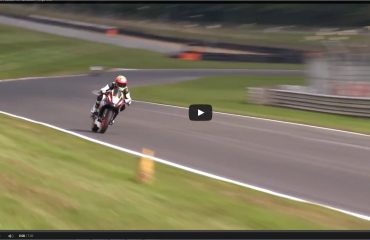
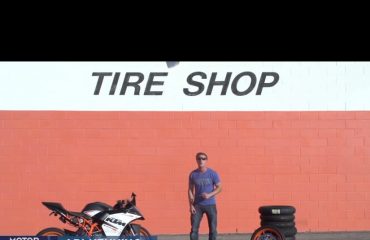
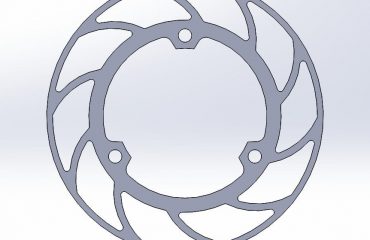
Thanks for this info. I’ve always been confused re: piggyback vs reflash. You’ve made it simple to understand. Appreciate it.
Okay I’m new to all this stuff. I’m going to be getting a 2022 r3 or mt03. Is the a racer all I need for a full exhaust ais delete airbox mod filter and stacks? I know they can be approved upon from the factory settings and I just want a smooth running bike with a little more power.
The aRacer Mini5 will be perfect for you. We will program it before sending it to you so it’s as easy as unplugging the stock ECU, plugging in the aRacer, and go ride!
Hello one question? The aRacer Mini5 can be directly connected to the Racer 2-way Quickshifter or it only works for the aRacer Super RC2
Yes you can use the aRacer quickshifter with either the Mini 5 or the Super ECUs.